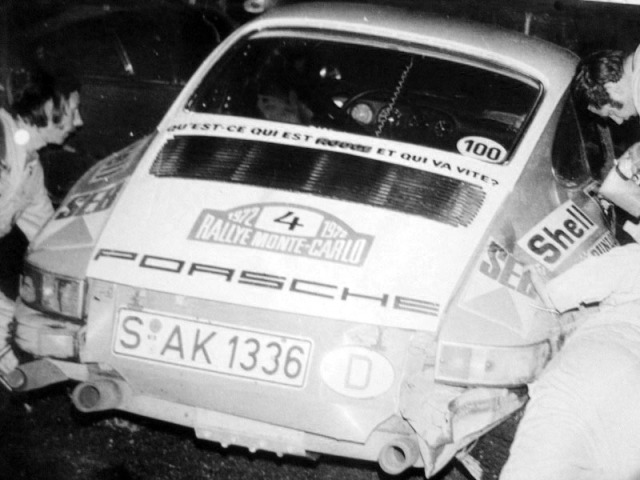Baudett
There is a world of difference between the 1970 and 1971 cars and the 1972 2.5 M491 cars in concept and execution of the "models".
The 1970 and 1971 cars were based on a 1970 S shell that had been deliberately designed as a "stripper" shell to homologate a competition version of the 911S at the lowest possible weight. In 1970 that was the so called "standard S" with lightweight interiors and minimal creature comforts. However almost all of the 1970 911S's had an option (M470) that added back all of the creature comforts that were in the 911E (good carpets etc) to have a car with the sort of fittings that an upmarket buyer would expect. in addition a relatively small number of shells were made with lightweight panels including the roof, outer panels, some interiors panels such as across the back seats and the front bulkhead/dash area. These shells formed the basis of the competition cars and together with the stripped out features created without having the M470 option, allowed a very light weight car to be homologated (930kg)
Added to this basic shell there was an extensive parts list of competition mechanical parts that were also homologated as well as some other body parts more suited for competition - like wider fenders / quarter panels to allow wider wheels.
This allowed competition customers to order a car to their own specs from the extensive parts list although the versions the factory were also available to be (mostly) replicated. Mostly because the factory used some parts on some of their cars that were not available to customers. They could be built to
sportausführung or rennausführung spec the latter being with the M491 option and designed for the track only.
In 1971 instead of starting with a "base" stripped out version, the standard 911S reverted to the "lux" spec that 911S's had been prior to 1970, and instead, an option (M471) was provided to strip the interior back to what the "standard" or base interior etc as with the 1970 Model. Apart from that, the extensive parts list of homologated competition parts was available and cars could be ordered in exactly the same way as in 1970. There was also a small number of the special lightweight shells left over for use for special customers in the 1971 model year. There was still the
sportausführung or rennausführung specs with the
rennausführung version being spec'd as M491 and the other M471. However the designation of exactly what the car was could and did differ as they were all effectively a bespoke build. therefore you saw designations like M471 Sport/ M491 (a lightweight - M471 car with M491 (track) specs) or M471 Sport or M471-Gr.4 (complying with and only available for use in the Gp 4 categories) etc. as well as some factory rally car specs - 2.2 Rallye and 2.2 Safari.
So in those two model years the concept was each customer could create their own car from a smorgasbord of homologated parts and theoretically no two cars need to be the same spec although the factory cars provided a good blueprint to follow, depending on what the intended use was.
In addition in those two years ANYONE with access to the factory customer sport department could order any of those homologated parts, usually in a "kit", and build their own competition car around a "road car" that they had, or an earlier model road car that had already been modified to competition, or in the case of Kremer and a small number of favored competition clients, around a bare shell (body in white) that could be ordered directly from the factory. These cars would not have a standard vin as they were never a production car but instead had the "body number" (000xxxx for 1970 and 001xxxx for 1971 models) as their identification.
In 1972 however there was a change in philosophy foreshadowing the following years "RS" series and building on the 911R experiment.
The 1972 ST’s were a significant turning point in the development of 911’s for competition purposes - one that remains until current times - because, instead of allowing customers to order bespoke cars from a menu of parts, Porsche decided to do a small “production run” of 21 identical “customer” competition cars along with 4 extra cars for factory use. Unlike the experiment with the 911R’s, all of these cars were built with existing homologated options so were able to be used in both rally and track competition events. In addition, the factory continued to produce kits of competition parts so that customer teams could build their own cars to similar specifications.
This limited production run of identical cars (suitable for both track and rally application with minor changes to setup and options) was the precursor to the production run of 55 highly successful 1973 M491 RSRs which, in a further development of production processes, were homologated by the production and sales of enough 1973 model year RS's. This marked the initial change to the process that still exists today for the creation of different limited series of customer sports purpose 911’s.
The four 1972 2.5ST factory cars were used by the factory team and its surrogates for both track and rally events as well as being research and development cars for the 1973 RSR’s. In fact, two of the four factory-owned 1972 M491 ST’s were eventually turned into full 1973 M491 RSR’s and even renumbered as such.




 Reply With Quote
Reply With Quote
